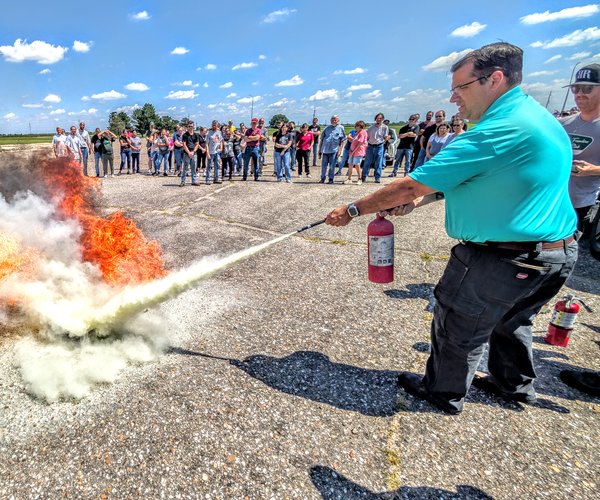As of Tuesday, Aug. 5th, the drought monitor report indicates the continued marked improvement of the previous week. Less than 1% of the state is in severe drought with 3.5% in moderate drought. The six-to ten-day outlook (Aug. 12 to 16) indicates a 50 to 60% chance of likely above normal for temperatures and a 33 to 40% chance of leaning above normal for precipitation. The eight to 14-day outlook (Aug. 14 to 20) indicates a 50 to 60% chance of likely above normal temperatures and near normal precipitation.
It’s hard to believe today is already Aug. 9th. Wheat planting is just around the corner, especially for those wanting to graze wheat pasture. Likely many have decided on what varieties to plant and what fields are going to wheat for 2026. Hopefully they have or will clean seed kept for planting.
Unless following a summer crop, weed control should be well underway. Hopefully, controlling volunteer wheat is a priority. There is one other item that may require more consideration than the last few years of limited precipitation and dryland crop yields. With commodity prices, both inputs and outputs, paying special attention to soil fertility is as important as ever. So briefly, here are some considerations:
• One difference is that the area has had more intense and significant rains compared to the last several years. This can lead to the leaching of mobile nutrients deeper or below the root zone, especially on sandier soils. Another difference is the removal of more nutrients after wheat with better yields, and this will likely be the case following corn, milo, and soybeans. Knowing yield goals and soil nutrient status is a key to an economically viable yield. Hopefully through soil testing, at least within the last two years for all but nitrogen and sulfur, you can figure how much the crop removed.
• You don’t necessarily need to grid soil samples, but at least a representative sample. Maybe several different ones if there is large apparent variability in soil across the field. If your sample is over a year old, at least estimate crop removal based on yield.
• North of the river, soil pH is not likely acidic. However, on the sandier dryland soils south of the river, acidity can be a problem and can affect nutrient availability and wheat growth.
• Typically, potassium (K) isn’t a problem but worth ensuring adequate K as it aids in drought tolerance and disease suppression. Phosphorus (P) may or may not be necessary. However, a starter fertilizer at planting, a combination of nitrogen (N) and P helps establish the crop.
• The most likely deficient micronutrient here would be chloride, especially since we don’t use much potash. The benefits are variety specific and more evident on sandier soils.
• Finally, nitrogen (N) and sulfur (S) tests are a good idea, particularly this year with better yields and more rainfall as these move easily in the soil. They should be conducted to 24” and as close to planting as possible. Problems again are more likely on sandier soils.
Dr. Victor L. Martin is the agriculture instructor/coordinator for Barton Community College. He can be reached at 620-792-9207, ext. 207, or martinv@bartonccc.edu.





